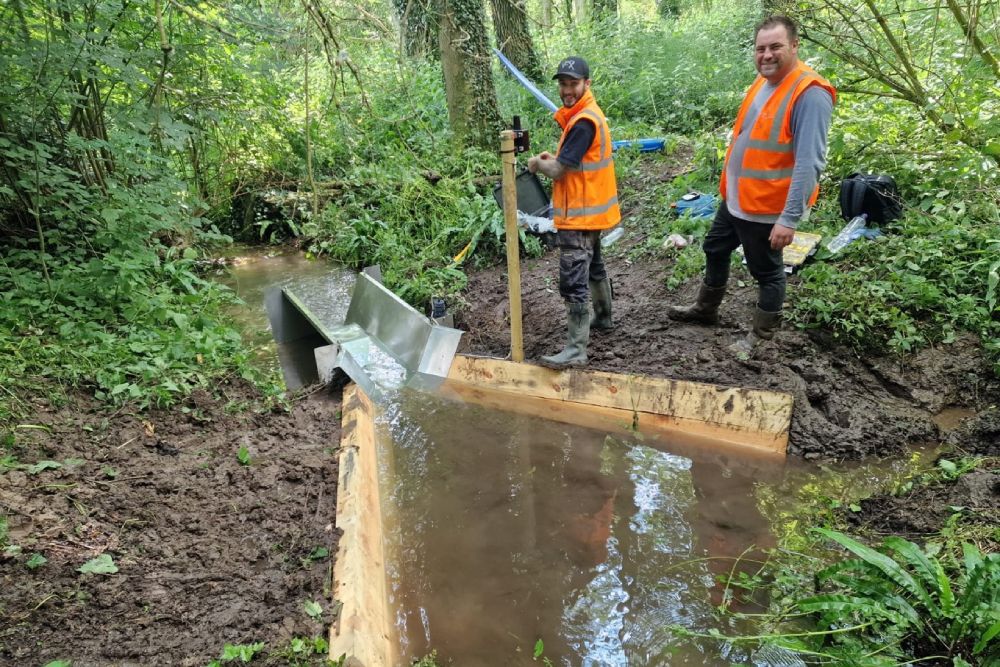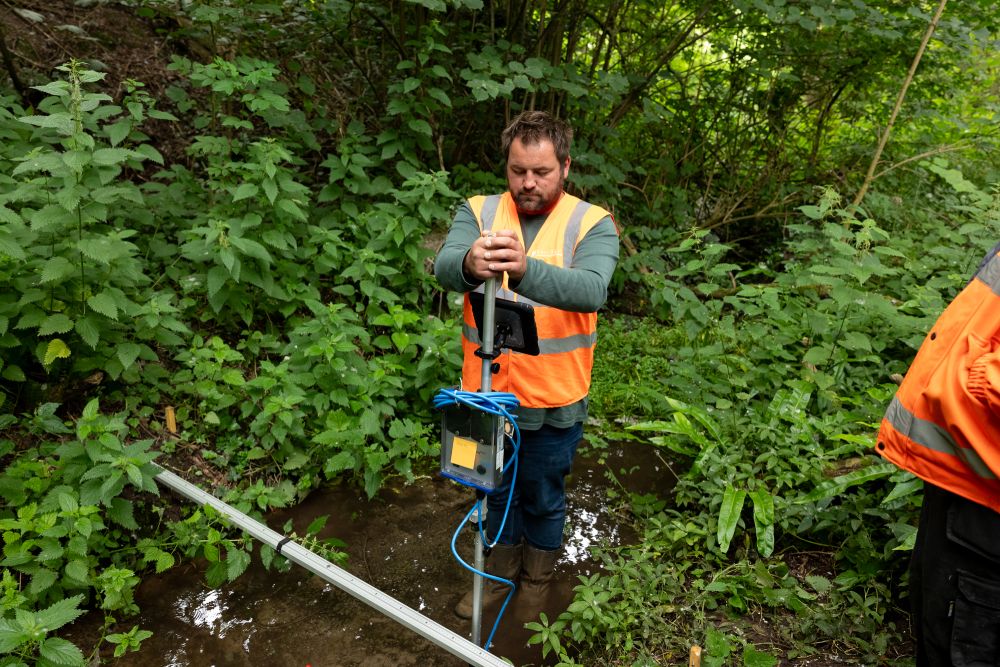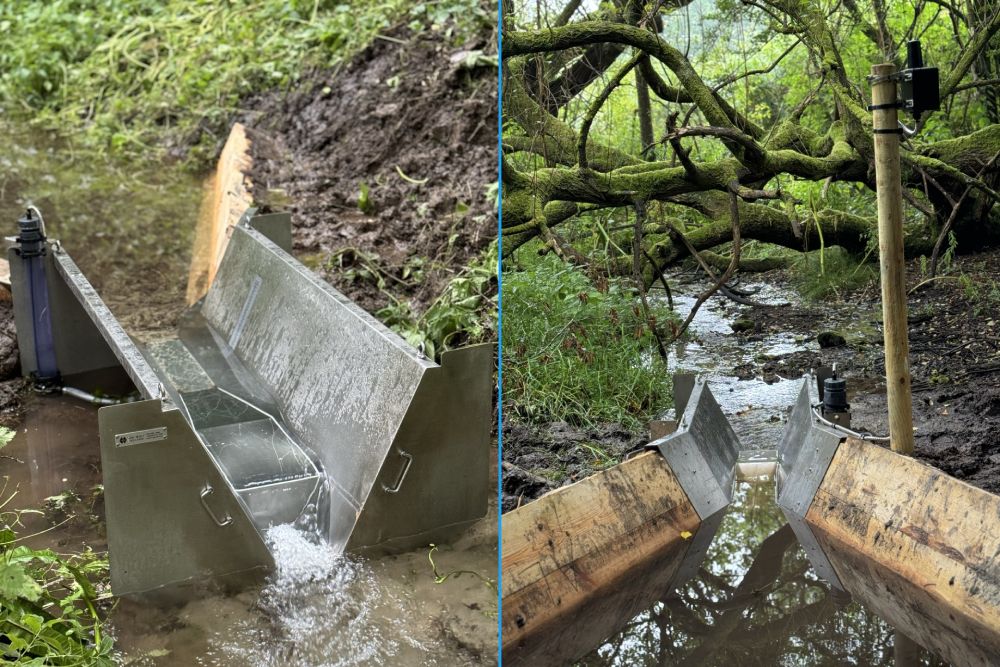
Project Overview
Flow – From Flumes to Flow Sticks

The Requirement
The team have been busy on site in two different locations installing our RBC flumes. Each flume has a high accuracy surface level sensor deployed within their stilling wells, with data pinging to our DataHub. A calculation is used for each installation, and flow rates are displayed in the vanwaltCONNECT portal for our customer to view and download.
Verification will be carried out by Max with our NivuFlow stick every 3-6 months. Check out our latest video to see the complete installation.

The Solution
There are many solutions for measuring surface water flow but each installation must be surveyed to make sure that the right instrument is chosen: For example, a V-notch weir needs a fall of at least 50cm, an ultrasonic or doppler sensor makes for an easy installation but the water must be clean for a couple of meters up and downstream and sediment can easily confuse the signal giving erratic data. So, often, when other materials cannot be used, the best and most accurate solution is the RBC flume.
RBC Flumes are very accurate but they have some limitations. The main one is that they need to be sized for the site conditions. If the flume is too small, it will be overwhelmed in the wet season. If it is bigger then it may be that it does not have the measuring range to report very low flow rates. Unfortunately there is not a “size to fit all”. The choice is however relatively straightforward: Size to make sure it can cope with the critical flows of a project. We must confess that we also sometimes get this wrong despite having installed these structures for the last 10 years. The remedy then is to re-install with the correct size.
Another advantage of the flume, beyond its accuracy, is that they are low maintenance. If they are silted up, generally a quick pass with a brush is all that suffices. In mountainous areas, streams may bring down rocks which can lodge in the mouth of the flume. These need to be removed.
As to accuracy: Our flumes are manufactured in 3mm stainless steel by our colleagues in Northern Ireland to a specification of 3%. But that is not the full story because the final accuracy is dependent on the installation. If this is done well, we estimate a system accuracy better than 10%.
Are there more accurate solutions? Yes, of course there are: Radar, multi-sensor dopllers etc. but these also have limitations and disadvantages such as high cost and often high power requirements which cannot be satisfied by a small solar array.
Finally, a word on verification: We strongly recommend that a flume system is periodically verified. Some do this quarterly, some half-yearly and some yearly (and some never). We have no particular opinion on this because this is dependent on many factors, but we strongly suggest that when verification is done it is carried out by trained personnel with approved instrumentation (we use the NivuFlow meter).
